This article is about the Republic of India. For other uses, see India (disambiguation).
India ( i /ˈɪndiə/), officially the Republic of India (Hindi: भारत गणराज्य Bhārat Gaṇarājya; see also official names of India), is a state inSouth Asia. It is the seventh-largest country by geographical area, the second-most populous country, and the most populous democracy in the world. Bounded by the Indian Ocean on the south, the Arabian Sea on the southwest, and the Bay of Bengal on the southeast, it shares land borders with Pakistan to the west; Bhutan, the People's Republic of China and Nepal to the northeast; andBangladesh and Burma to the east. In the Indian Ocean, India is in the vicinity of Sri Lanka and the Maldives; in addition, India'sAndaman and Nicobar Islands share a maritime border with Thailand and Indonesia.
i /ˈɪndiə/), officially the Republic of India (Hindi: भारत गणराज्य Bhārat Gaṇarājya; see also official names of India), is a state inSouth Asia. It is the seventh-largest country by geographical area, the second-most populous country, and the most populous democracy in the world. Bounded by the Indian Ocean on the south, the Arabian Sea on the southwest, and the Bay of Bengal on the southeast, it shares land borders with Pakistan to the west; Bhutan, the People's Republic of China and Nepal to the northeast; andBangladesh and Burma to the east. In the Indian Ocean, India is in the vicinity of Sri Lanka and the Maldives; in addition, India'sAndaman and Nicobar Islands share a maritime border with Thailand and Indonesia.
Home to the ancient Indus Valley Civilization and a region of historic trade routes and vast empires, the Indian subcontinent was identified with its commercial and cultural wealth for much of its long history.[16] Four of the world's major religions—Hinduism, Buddhism, Jainismand Sikhism—originated here, while Zoroastrianism, Christianity and Islam arrived in the first millennium CE and shaped the region'sdiverse culture.[17] Gradually annexed by the British East India Company from the early 18th century and colonised by the United Kingdom from the mid-19th century, India became an independent nation in 1947 after a struggle for independence which was marked bynon-violent resistance and led by Mahatma Gandhi.
The Indian economy is the world's eleventh largest by nominal GDP and fourth largest by purchasing power parity. Following market-based economic reforms in 1991, India has become one of the fastest growing major economies, and is considered a newly industrialized country; however, it continues to face the challenges of poverty, illiteracy, corruption and inadequate public health. A nuclear weapons state and a regional power, it has the third-largest standing army in the world, and ranks tenth in military expenditure among nations.
India is a federal constitutional republic with a parliamentary system consisting of 28 states and seven union territories. It is a member of the United Nations, the Non-Aligned Movement, the World Trade Organization, the South Asian Association for Regional Cooperation, theEast Asia Summit, the G20, the G8+5, and the Commonwealth of Nations; and is one of the four BRIC nations. India is a pluralistic,multilingual, and multiethnic society. It is also home to a diversity of wildlife in a variety of protected habitats.
Contents[hide] |
Etymology
Main article: Names of India
The name India is derived from Indus, which is derived from the Old Persian word Hindu, from Sanskrit सिन्धु Sindhu, the historic local appellation for the Indus River.[18] The ancient Greeks referred to the Indians as Indoi (Ινδοί), the people of the Indus.[19] The Constitution of India and common usage in various Indian languages also recognise Bharat (pronounced [ˈbʱaːrət̪] ( listen)) as an official name of equal status.[20] The name Bharat is derived from the name of the legendary king Bharata in Hindu scriptures. Hindustan ([ɦɪnd̪ʊˈst̪aːn] (
listen)) as an official name of equal status.[20] The name Bharat is derived from the name of the legendary king Bharata in Hindu scriptures. Hindustan ([ɦɪnd̪ʊˈst̪aːn] ( listen)), originally a Persian word for “Land of the Hindus” referring to northern India and Pakistan before 1947, is also occasionally used as a synonym for all of India.[21]
listen)), originally a Persian word for “Land of the Hindus” referring to northern India and Pakistan before 1947, is also occasionally used as a synonym for all of India.[21]
History
| The neutrality of this section is disputed. Please see the discussion on the talk page. Please do not remove this message until the dispute is resolved. (February 2011) |
Main articles: History of India and History of the Republic of India
Stone Age rock shelters with paintings at the Bhimbetka rock shelters in Madhya Pradesh are the earliest known traces of human life in India. The first known permanent settlements appeared about 8,500 years ago and gradually developed into the Indus Valley Civilisation,[22] dating back to 3400 BCE in western India. It was followed by the Vedic period, which laid the foundations of Hinduism and other cultural aspects of early Indian society, and ended in the 500s BCE. From around 550 BCE, many independent kingdoms and republics known as the Mahajanapadas were established across the country.[23]
In the third century BCE, Maurya Empire gradually united the Indian sub-continent under Chandragupta Maurya, his son Bindusara and grandson Ashoka the Great.[24] From the third century CE, the Gupta dynasty oversaw the period referred to as ancient "India's Golden Age".[25][26] Empires in southern India included those of the Chalukyas, the Cholas and the Vijayanagara Empire. Science, technology,engineering, art, logic, language, literature, mathematics, astronomy, religion and philosophy flourished under the patronage of these kings.
Following invasions from Central Asia between the 10th and 12th centuries, much of northern India came under the rule of the Delhi Sultanate and later the Mughal Empire. Under the rule ofAkbar the Great, India enjoyed much cultural and economic progress as well as religious harmony.[27][28] Mughal emperors gradually expanded their empires to cover large parts of the subcontinent. However, in northeastern India, the dominant power was the Ahom kingdom ofAssam, among the few kingdoms to have resisted Mughal subjugation. Due to Mughal persecution, the Sikhs developed a martial tradition and established the Sikh Empire which stood until the Anglo-Sikh wars in the mid-19th century.[29] The first major threat to Mughal imperial power came from a Hindu Rajput king Maha Rana Pratap of Mewar in the 16th century and later from a Hindu state known as the Maratha confederacy, that ruled much of India in the mid-18th century.[30]
From the 16th century, European powers such as Portugal, the Netherlands, France, and Great Britain established trading posts and later took advantage of internal conflicts to establish colonies. By 1856, most of India had come under the control of the British East India Company.[31]A year later, a nationwide insurrection of rebelling military units and kingdoms, known as India's First War of Independence or the Sepoy Mutiny, seriously challenged the Company's control but eventually failed. As a result of the instability, India was brought under the direct rule of the British Crown.
In the 20th century, a nationwide struggle for independence was launched by the Indian National Congress and other political organisations.[32]A large part of the movement for independence was led by Mahatma Gandhi and the Indian National Congress, which led millions of people in several national campaigns of non-violent civil disobedience.[33]
On 15 August 1947, India gained independence from British rule, but at the same time the Muslim-majority areas were partitioned to form a separate state of Pakistan.[34] On 26 January 1950, India became a republic and a new constitution came into effect.[35]
Since independence, India has faced challenges from religious violence, casteism, naxalism, terrorism and regional separatist insurgencies, especially in Jammu and Kashmir and Northeast India. Since the 1990s terrorist attacks have affected many Indian cities. India has unresolved territorial disputes with the People's Republic of China, which, in 1962, escalated into the Sino-Indian War, and with Pakistan, which resulted in wars in 1947, 1965, 1971 and 1999. India is a founding member of the United Nations (as British India) and the Non-Aligned Movement.
India is a state armed with nuclear weapons; having conducted its first nuclear test in 1974,[36] followed by another five tests in 1998.[36]Beginning 1991, significant economic reforms[37] have transformed India into one of the fastest-growing economies in the world, increasing its global clout.[38]
Geography
Main article: Geography of India
See also: Geology of India
India, the major portion of the Indian subcontinent, lies atop the Indian tectonic plate, a minor plate within the Indo-Australian Plate.[39] India's defining geological processes commenced seventy-five million years ago, when the Indian subcontinent, then part of the southern supercontinent Gondwana, began a northeastwards drift—lasting fifty million years—across the then unformed Indian Ocean.[39] The subcontinent's subsequent collision with the Eurasian Plate and subduction under it, gave rise to the Himalayas, the planet's highest mountains, which now abut India in the north and the north-east.[39] In the former seabed immediately south of the emerging Himalayas, plate movement created a vast trough, which, having gradually been filled with river-borne sediment,[40] now forms the Indo-Gangetic Plain.[41] To the west of this plain, and cut off from it by the Aravalli Range, lies the Thar Desert.[42]
The original Indian plate now survives as peninsular India, the oldest and geologically most stable part of India, and extends as far north as theSatpura and Vindhya ranges in central India. These parallel ranges run from the Arabian Sea coast in Gujarat in the west to the coal-rich Chota Nagpur Plateau in Jharkhand in the east.[43] To their south, the remaining peninsular landmass, the Deccan Plateau, is flanked on the left and right by the coastal ranges, Western Ghats and Eastern Ghats respectively;[44] the plateau contains the oldest rock formations in India, some over one billion years old. Constituted in such fashion, India lies to the north of the equator between 6°44' and 35°30' north latitude[45] and 68°7' and 97°25' east longitude.[46]
India's coast is 7,517 kilometres (4,700 mi) long; of this distance, 5,423 kilometres (3,400 mi) belong to peninsular India, and 2,094 kilometres (1,300 mi) to the Andaman, Nicobar, and Lakshadweep Islands.[47] According to the Indian naval hydrographic charts, the mainland coast consists of the following: 43% sandy beaches, 11% rocky coast including cliffs, and 46%mudflats or marshy coast.[47]
Major Himalayan-origin rivers that substantially flow through India include the Ganges (Ganga) and the Brahmaputra, both of which drain into the Bay of Bengal.[48] Important tributaries of the Ganges include the Yamuna and the Kosi; the latter's extremely low gradient causes disastrous floods every year. Major peninsular rivers, whose steeper gradients prevent their waters from flooding, include the Godavari, theMahanadi, the Kaveri, and the Krishna, which also drain into the Bay of Bengal;[49] and the Narmada and the Tapti, which drain into theArabian Sea.[50] Among notable coastal features of India are the marshy Rann of Kutch in western India, and the alluvial Sundarbans delta, which India shares with Bangladesh.[51] India has two archipelagos: the Lakshadweep, coral atolls off India's south-western coast; and theAndaman and Nicobar Islands, a volcanic chain in the Andaman Sea.[52]
Climate
Main article: Climate of India
India's climate is strongly influenced by the Himalayas and the Thar Desert, both of which drive the monsoons.[53] The Himalayas prevent cold Central Asian katabatic winds from blowing in, keeping the bulk of the Indian subcontinent warmer than most locations at similar latitudes.[54][55] The Thar Desert plays a crucial role in attracting the moisture-laden southwest summer monsoon winds that, between June and October, provide the majority of India's rainfall.[53] Four major climatic groupings predominate in India: tropical wet, tropical dry,subtropical humid, and montane.[56]
Biodiversity
Main article: Wildlife of India
See also: List of ecoregions in India
Lying within the Indomalaya ecozone, with three hotspots located within its area, India displays significant biodiversity.[59] As one of the seventeen megadiverse countries, it is home to 7.6% of all mammalian, 12.6% of all avian, 6.2% of all reptilian, 4.4% of all amphibian, 11.7% of all fish, and 6.0% of all flowering plant species.[60] Many ecoregions, such as the shola forests, exhibit extremely high rates of endemism; overall, 33% of Indian plant species are endemic.[61][62]
India's forest cover ranges from the tropical rainforest of the Andaman Islands, Western Ghats, and northeastern India to the coniferous forestof the Himalaya. Between these extremes lie the sal-dominated moist deciduous forest of eastern India; the teak-dominated dry deciduous forest of central and southern India; and the babul-dominated thorn forest of the central Deccan and western Gangetic plain.[63] Important Indian trees include the medicinal neem, widely used in rural Indian herbal remedies. The pipal fig tree, shown on the seals of Mohenjo-daro, shadedGautama Buddha as he sought enlightenment. According to latest report, less than 12% of India's landmass is covered by dense forests.[64]
Many Indian species are descendants of taxa originating in Gondwana, from which the Indian plate separated a long time ago. Peninsular India's subsequent movement towards, and collision with, the Laurasian landmass set off a mass exchange of species. However, volcanismand climatic changes 20 million years ago caused the extinction of many endemic Indian forms.[65] Soon thereafter, mammals entered India from Asia through two zoogeographical passes on either side of the emerging Himalaya.[63] Consequently, among Indian species, only 12.6% of mammals and 4.5% of birds are endemic, contrasting with 45.8% of reptiles and 55.8% of amphibians.[60] Notable endemics are the Nilgiri leaf monkey and the brown and carmine Beddome's toad of the Western Ghats. India contains 172, or 2.9%, of IUCN-designated threatened species.[66] These include the Asiatic Lion, the Bengal Tiger, and the Indian white-rumped vulture, which suffered a near-extinction from ingesting the carrion of diclofenac-treated cattle.
In recent decades, human encroachment has posed a threat to India's wildlife; in response, the system of national parks and protected areas, first established in 1935, was substantially expanded. In 1972, India enacted the Wildlife Protection Act[67] and Project Tiger to safeguard crucial habitat; in addition, the Forest Conservation Act was enacted in 1980.[68] Along withmore than five hundred wildlife sanctuaries, India hosts thirteen biosphere reserves,[69] four of which are part of the World Network of Biosphere Reserves; twenty-five wetlands are registered under the Ramsar Convention.[70]
Politics
Main article: Politics of India
India is the most populous democracy in the world.[71][72] A parliamentary republic with a multi-party system,[73] it has six recognised national parties, including the Indian National Congress and Bhartiya Janata Party (BJP), and more than 40 regional parties.[74] The Congress is considered centre-left or "liberal" in the Indian political culture, and the BJP centre-right or "conservative". For most of the period between 1950—when India first became a republic—and the late 1980s, the Congress held a majority in the parliament. Since then, however, it has increasingly shared the political stage with the BJP,[75] as well as with ever more powerful regional parties which have often forced multi-partycoalitions at the centre.[76]
In the first three general elections in the Republic of India, in 1951, 1957 and 1962, the Congress, led by Jawaharlal Nehru, won easy victories. In 1964, after Nehru's death, Lal Bahadur Shastri briefly became prime minister, and was succeeded after his own unexpected death, in 1966, by Indira Gandhi, who went on to lead the Congress to election victories in 1967 and 1971. Following public discontent with the state of emergency declared by Indira Gandhi in 1975, the Congress was voted out of power in 1977, and a new party, the Janata Party, which had opposed the emergency, voted in. Its government, however, proved short lived, lasting just over three years. Back in power in 1980, the Congress saw a change in leadership in 1984, when prime minister Indira Gandhi was assassinated and succeeded by her son Rajiv Gandhi, who won an easy victory in the general elections later that year. The Congress was voted out again in 1989, when a National Front coalition, led by the newly formed Janata Dal, in alliance with the Left Front, won the elections; that government too proved short lived, lasting just under two years.[77] Elections were held again in 1991 in which no party won an absolute majority, but the Congress, as the largest single party, was able to form a minority government, led by P.V. Narasimha Rao, and to complete a five-year term.[78]
The two years after the general election of 1996 were years of political turmoil, with several short-lived alliances sharing power at the centre. The BJP formed a government briefly in 1996, followed by one of the United Front coalition, but without the support of either the BJP or the Congress. In 1998, the BJP was able to form a successful coalition, the National Democratic Alliance (NDA), which, under the leadership of Atal Bihari Vajpayee, became the first non-Congress government to complete a full five-year term.[79] In the 2004 Indian general elections, again no party won an absolute majority, but the Congress emerged as the largest single party, forming a successful coalition, the United Progressive Alliance (UPA), with the support of left-leaning parties and MPs opposed to the BJP. The UPA coalition was returned to power in the 2009 general election, the proportion of left-leaning parties within the coalition now significantly reduced.[80] That year, Manmohan Singh became the first prime minister since Jawaharlal Nehru in 1957 and 1962 to be re-elected to a second five-year term.[81]
Government
Main articles: Government of India and Constitution of India
| Flag | Tricolour | |
| Emblem | Sarnath Lion Capital | |
| Anthem | Jana Gana Mana | |
| Song | Vande Mataram | |
| Animal | Royal Bengal Tiger | |
| Bird | Indian Peacock | |
| Aquatic animal | Dolphin | |
| Flower | Lotus | |
| Tree | Banyan | |
| Fruit | Mango | |
| Sport | Field hockey | |
| Calendar | Saka | |
| River | Ganges | |
India is a federation with a parliamentary system governed under the Constitution of India.[84] It is a constitutional republic and representative democracy, in which "majority rule is tempered by minority rights protected by law." Federalism in India defines the power distribution between the centre and the states. The government is regulated by a checks and balances defined by Indian Constitution, which serves as the country's supreme legal document. The Constitution of India, which came into effect on 26 January 1950,[85] states in its preamble that India is a sovereign, socialist, secular, democratic republic.[86] India's form of government, traditionally described as 'quasi-federal' with a strong centre and weak states,[87] has grown increasingly federal since the late 1990s as a result of political, economic and social changes.[88]
The President of India is the head of state[89] elected indirectly by an electoral college[90] for a five-year term.[91][92] The Prime Minister is thehead of government and exercises most executive power.[89] Appointed by the President,[93] the prime minister is by convention supported by the party or political alliance holding the majority of seats in the lower house of parliament.[89] The executive branch of the Indian government consists of the president, the vice-president, and the council of ministers (the cabinet being its executive committee) headed by the prime minister. Any minister holding a portfolio must be a member of one of the houses of parliament. In the Indian parliamentary system, the executive is subordinate to the legislature, with the prime minister and his council directly responsible to the lower house of the parliament.[94]
The legislature of India is the bicameral parliament, operating under a Westminster-style parliamentary system, and comprising the upper house called the Rajya Sabha (Council of States) and the lower called the Lok Sabha (House of People).[95] The Rajya Sabha, a permanent body, has 245 members serving staggered six year terms.[96] Most are elected indirectly by the state and territorial legislatures, their numbers in proportion to their state's population.[96]All but two of the Lok Sabha's 545 members are directly elected by popular vote to represent individual constituencies for five-year terms.[96] The remaining two members are nominated by the president from among the Anglo-Indian community, in case the president decides that the community is not adequately represented.[96]
Judiciary
India has a unitary three-tier judiciary, consisting of the Supreme Court, headed by the Chief Justice of India, 21 High Courts, and a large number of trial courts.[97] The Supreme Court has original jurisdiction over cases involving fundamental rights and over disputes between states and the Centre, and appellate jurisdiction over the High Courts.[98] It is judicially independent,[97] and has the power both to declare the law and to strike down Union or State laws which contravene the Constitution.[99] The Supreme Court is also the ultimate interpreter of the Constitution, it being one of its most important functions.[100]
Administrative divisions
Main article: Administrative divisions of India
India consists of 28 states and seven Union Territories.[101] All states, as well as the union territories of Puducherry and the National Capital Territory of Delhi, have elected legislatures and governments, both patterned on the Westminster model. The remaining five union territories are directly ruled by the Centre through appointed administrators. In 1956, under theStates Reorganisation Act, states were reorganised on a linguistic basis.[102] Since then, their structure has remained largely unchanged. Each state or union territory is further divided into administrative districts.[103] The districts in turn are further divided into tehsils and ultimately into villages.
States:
Union Territories:
Foreign relations
Main article: Foreign relations of India
Since its independence in 1947, India has maintained cordial relations with most nations. In the 1950s, it strongly supported the independence of European colonies in Africa and Asia and played a pioneering role in the Non-Aligned Movement.[105][106] In the late 1980s, India made two brief military interventions at the invitation of neighbouring countries, one by the Indian Peace Keeping Force in Sri Lanka and the other,Operation Cactus, in the Maldives. However, India has had a tense relationship with neighbouring Pakistan and the two countries have gone to war four times, in 1947, 1965, 1971 and 1999. The Kashmir dispute was the predominant cause of these wars, excepting that of 1971, which followed the civil unrest in erstwhile East Pakistan.[107] After the India-China War of 1962 and the 1965 war with Pakistan, India proceeded to develop close military and economic ties with the Soviet Union; by late 1960s, the Soviet Union had emerged as India's largest arms supplier.[108]
Today, in addition to the continuing strategic relations with Russia, India has wide ranging defence relations with Israel and France. In recent years, India has played an influential role in the South Asian Association for Regional Cooperation and the World Trade Organization.[109] The nation has provided 55,000 military and police personnel to serve in thirty-five UN peacekeeping operations across four continents.[110] India is also an active participant in various multilateral forums, most notably the East Asia Summit and the G8+5.[111][112] In the economic sphere, India has close relationships with the developing nations of South America, Asia and Africa. For about a decade now, India has also pursued a"Look East" policy which has helped it strengthen its partnerships with the ASEAN nations, Japan and South Korea on a wide range of issues, but especially economic investment and regional security.[113][114]
Recently, India has also increased its economic, strategic and military cooperation with the United States and the European Union.[115] In 2008, a civilian nuclear agreement was signed between India and the United States. Although India possessed nuclear weapons at the time and was not party to the Nuclear Non-Proliferation Treaty (NPT), it received waivers from theInternational Atomic Energy Agency and the Nuclear Suppliers Group (NSG), ending earlier restrictions on India's nuclear technology and commerce. As a consequence, India has become the world's sixth de facto nuclear weapons state.[116] Following the NSG waiver, India was also able to sign civilian nuclear energy cooperation agreements with other nations, including Russia,[117] France,[118] the United Kingdom,[119] and Canada.[120]
Military
Main article: Indian Armed Forces
India's military, comprising the Indian Army, Navy, Air Force, and auxiliary forces such as the Paramilitary Forces, the Coast Guard, and theStrategic Forces Command, is the third largest in the world.[35] The President of India is the supreme commander of the Indian Armed Forces. The official Indian defence budget for 2011 stands at US$36.03 billion (or 1.83% of GDP).[122] According to a 2008 SIPRI report, India's annual military expenditure in terms of purchasing power stood at US$72.7 billion,[123] India has also become the world's largest arms importer, receiving 9% of all international arms transfers during the period from 2006–2010.[124] Defence contractors, such as the Defence Research and Development Organisation (DRDO) and Hindustan Aeronautics (HAL), oversee indigenous development of sophisticated arms and military equipment, including ballistic missiles, fighter aircraft and main battle tanks, in order to reduce India's dependence on foreign imports.
China's nuclear test of 1964 as well as its repeated threats to intervene in support of Pakistan in the 1965 war convinced India to developnuclear weapons of its own.[125] India conducted its first nuclear weapons test in 1974 and further underground testing in 1998. Despite criticism and military sanctions, India has signed neither the Comprehensive Nuclear-Test-Ban Treaty (CTBT) nor the NPT, considering both to be flawed and discriminatory.[126] India maintains a "no first use" nuclear policy and is developing a nuclear triad capability as a part of its "minimum credible deterrence" doctrine.[127][128] It is also developing a ballistic missile defence shield and, in collaboration with Russia, a fifth generation fighter jet.[129][130] Other major indigenous military development projects include Vikrant class aircraft carriers and Arihant class nuclear submarines.[131][132]
Economy
Main article: Economy of India
According to the International Monetary Fund, India's nominal GDP stands at US$1.43 trillion, making it the eleventh-largest economy in the world.[133]With purchasing power parity (PPP), India's economy is the fourth largest in the world at US$4.001 trillion.[134] With its average annual GDP growing at 5.8% for the past two decades, India is also one of the fastest growing economies in the world.[135] However, India's per capita income is US$1,000,[136] and the country ranks 142th in nominal GDP per capita and 127th in GDP per capita at PPP among all countries of the world.[133]
Until 1991, all Indian governments followed protectionist policies that were influenced by socialist economics. Widespread state intervention and regulation[137] caused the Indian economy to be largely closed to the outside world. After an acute balance of payments crisis in 1991, the nationliberalised its economy and has since continued to move towards a free-market system,[138][139] emphasizing both foreign trade and investment.[140]Consequently, India's economic model is now being described overall as capitalist.[139]
India has the world's second largest labour force, with 467 million people.[141] In terms of output, the agricultural sector accounts for 28% of GDP; the service and industrial sectors make up 54% and 18% respectively. Major agricultural products include rice, wheat, oilseed, cotton, jute, tea, sugarcane, potatoes.[101] Major industries include textiles, telecommunications, chemicals, food processing, steel, transport equipment, cement, mining, petroleum, machinery and software.[101] India's external trade has reached a relatively moderate share of 24% of GDP in 2006, up from 6% in 1985.[138]In 2008, India's share of world trade was about 1.68%;[142] in 2009, it was the world's fifteenth largest importer and eighteenth largest exporter.[143]Major exports include petroleum products, textile goods, gems and jewelry, software, engineering goods, chemicals, and leather manufactures.[101]Major imports include crude oil, machinery, gems, fertiliser, chemicals.[101]
During the late 2000s, India's economic growth averaged 7.5% a year.[138] Over the past decade, hourly wage rates in India have more than doubled.[146] According to a 2007 McKinsey Global Institute report, since 1985, India's robust economic growth has shifted 431 million Indians out of poverty and by 2030, India's middle class population will rise to more than 580 million people.[147] India ranks 51st in the Global Competitiveness Report and if diversified, it ranked 16th in financial marketsophistication, 24th in banking sector, 27th in business sophistication and 30th in innovation; ahead of several advanced economies.[148]Seven of the world's top 15 technology outsourcing companies are based in India and the country is viewed as the second most favourable outsourcing destination after the United States.[149] India's consumer market is currently the world's thirteenth largest and is expected to become the fifth largest by 2030.[147] India has the world's fastest growing telecommunication industry, adding about 10 million subscribers during 2008–09 period.[150] The country has the world's second fastest growing automobile industry, with domestic sales increasing by 26% during the 2009–10 period[151] and exports increasing by 36% during the 2008–09 period.[152]
Despite India's impressive economic growth over recent decades, the country continues to face various socio-economic challenges. Though the percentage of people living below the World Bank's international poverty line of $1.25/day decreased from 60% in 1981 to 42% in 2005,[153] the country still contains the largest concentration of poor people in the world.[154] Since 1991, inter-state economic inequality in India has consistently grown; the per capita net state domestic product of India's richest states is about 3.2 times that of the poorest states.[155]Perception about corruption in India has also increased significantly[156] and according to one estimate, since independence India has lost US$462 billion in illegal capital flows.[157] Half of the children in India are underweight[158] and about 46% of Indian children under the age of three suffer from malnutrition.[154]
According to a 2011 PwC report, in terms of PPP, India's GDP will overtake that of Japan in 2011 and by 2045, India's GDP will surpass that of the United States.[159] Additionally, over the next four decades, India's average annual economic growth rate is expected to stand at about 8% and therefore, it has the potential to be the world's fastest growing major economy over the period to 2050.[159] The report also highlighted some of the key factors behind India's high economic growth rate — young and rapidly growing working age population; growth of manufacturing sector due to strong engineering skills and rising levels of education; and sustained growth of consumer market due to rapidly growing middle class population.[159]However, the World Bank suggests that for India to achieve its economic potential, it must continue to focus on public sector reform, transport infrastructure, agricultural and rural development, removal of labour regulations, education, energy security, and public health and nutrition.[160]
Demographics
Main article: Demographics of India
See also: Ethnic groups of South Asia, List of most populous metropolitan areas in India, and Religion in India
With an estimated population of 1.2 billion,[10] India is the world's second most populous country. The last 50 years have seen a rapid increase in population due to medical advances and massive increase in agricultural productivity due to the "green revolution".[161][162] The percentage of Indian population living in urban areas has consistently grown; from 1991 to 2001, India's urban population increased by 31.2%.[163] In 2001, about 285 million Indians lived in urban areas while more than 70% of India's population resided in rural areas.[164][165] As per the 2001 census, there are twenty seven million-plus cities,[163] with the largest cities being Mumbai, Delhi and Kolkata.
India's literacy rate is 64.8% (53.7% for females and 75.3% for males).[35] The state of Kerala has the highest literacy rate at 91% while Biharhas the lowest at 47%.[166][167] The national human sex ratio is 944 females per 1,000 males. India's median age is 24.9, and the population growth rate of 1.38% per annum; there are 22.01 births per 1,000 people per year.[35] Though India has one of the world's most diverse and modern healthcare systems, the country continues to face several public health-related challenges.[168][169] According to the World Health Organization, 900,000 Indians die each year from drinking contaminated water and breathing in polluted air.[170] There are about 60 physicians per 100,000 people in India.[171]
The Indian Constitution recognises 212 scheduled tribal groups which together constitute about 7.5% of the country's population.[172] As per the 2001 census, over 800 million Indians (80.5%) were Hindu. Other religious groups include Muslims (13.4%), Christians (2.3%), Sikhs(1.9%), Buddhists (0.8%), Jains (0.4%), Jews, Zoroastrians and Bahá'ís.[173] India has the world's third-largest Muslim population and the largest Muslim population for a non-Muslim majority country.
Languages
Main article: Languages of India
India is home to two major linguistic families: Indo-Aryan (spoken by about 74% of the population) and Dravidian (spoken by about 24%). Other languages spoken in India come from theAustro-Asiatic and Tibeto-Burman linguistic families. Neither the Constitution of India, nor any Indian law defines any national language.[174] Hindi, with the largest number of speakers,[175] is the official language of the union.[176] English is used extensively in business and administration and has the status of a 'subsidiary official language;'[177] it is also important in education, especially as a medium of higher education. In addition, every state and union territory has its own official languages, and the constitution also recognises in particular 21 "scheduled languages".
Culture
Main article: Culture of India
India's culture is marked by a high degree of syncretism[179] and cultural pluralism.[180] India's cultural tradition dates back to 8000 BCE[181]and has a continuously recorded history for over 2,500 years.[182] With its roots based in the Indus Valley Tradition, the Indian culture took a distinctive shape during the 11th century BCE Vedic age which laid the foundation of Hindu philosophy, mythology, literary tradition and beliefs and practices, such as dhárma, kárma, yóga and mokṣa.[183] It has managed to preserve established traditions while absorbing new customs, traditions, and ideas from invaders and immigrants and spreading its cultural influence to other parts of Asia, mainly South East and East Asia.
Indian religions form one of the most defining aspects of Indian culture.[184] Major dhármic religions which were founded in India includeHinduism, Buddhism and Jainism. Considered to be a successor to the ancient Vedic religion,[185] Hinduism has been shaped by the various schools of thoughts based on the Upanishads,[186] the Yoga Sutras and the Bhakti movement.[184] Buddhism originated in India in 5th century BCE and prominent early Buddhist schools, such as Theravāda and Mahāyāna, gained dominance during the Maurya Empire.[184] Though Buddhism entered a period of gradual decline in India 5th century CE onwards,[187] it played an influential role in shaping Indian philosophy and thought.[184]
Indian architecture is one area that represents the diversity of Indian culture. Much of it, including notable monuments such as the Taj Mahal and other examples of Mughal architecture and South Indian architecture, comprises a blend of ancient and varied local traditions from several parts of the country and abroad. Vernacular architecture also displays notable regional variation.
Considered to be the earliest and foremost "monument" of Indian literature, the Vedic or Sanskrit literature was developed from 1,400 BCE to 1,200 AD.[188][189] Prominent Indian literary works of the classical era include epics such as Mahābhārata and Ramayana, dramas such as the Abhijñānaśākuntalam (The Recognition of Śakuntalā), and poetry such as the Mahākāvya.[190] Developed between 600 BCE and 300 AD, the Sangam literature consists 2,381 poems and is regarded as a predecessor of Tamil literature.[191][192][193] From 7th century AD to 18th century AD, India's literary traditions went through a period of drastic change because of the emergence of devotional poets such asKabīr, Tulsīdās and Guru Nānak. This period was characterised by varied and wide spectrum of thought and expression and as a consequence, medieval Indian literary works differed significantly from classical traditions.[194] In the 19th century, Indian writers took new interest in social questions and psychological descriptions. During the 20th century, Indian literature was heavily influenced by the works of universally acclaimed Bengali poet and novelist Rabindranath Tagore.[195]
Society and traditions
Traditional Indian society is defined by relatively strict social hierarchy. The Indian caste system describes the social stratification and social restrictions in the Indian subcontinent, in which social classes are defined by thousands of endogamous hereditary groups, often termed asjātis or castes.[196] Several influential social reform movements, such as the Bramho Shômaj, the Arya Samāja and the Ramakrishna Mission, have played a pivotal role in the emancipation of Dalits (or "untouchables") and other lower-caste communities in India.[197] However, the majority of Dalits continue to live in segregation and are often persecuted and discriminated against.[198]
Traditional Indian family values are highly respected, and multi-generational patriarchal joint families have been the norm, although nuclear families are becoming common in urban areas.[199] An overwhelming majority of Indians have their marriages arranged by their parents and other respected family members, with the consent of the bride and groom.[200] Marriage is thought to be for life,[200] and the divorce rate is extremely low.[201] Child marriage is still a common practice, more so in rural India, with half of women in India marrying before the legal age of 18.[202][203]
Many Indian festivals are religious in origin, although several are celebrated irrespective of caste and creed. Some popular festivals are Diwali,Ganesh Chaturthi, Ugadi, Thai Pongal, Holi, Onam, Vijayadashami, Durga Puja, Eid ul-Fitr, Bakr-Id, Christmas, Buddha Jayanti, Moharram andVaisakhi.[204][205] India has three national holidays which are observed in all states and union territories — Republic Day, Independence Dayand Gandhi Jayanti. Other sets of holidays, varying between nine and twelve, are officially observed in individual states. Religious practices are an integral part of everyday life and are a very public affair.
Traditional Indian dress varies across the regions in its colours and styles and depends on various factors, including climate. Popular styles of dress include draped garments such assari for women and dhoti or lungi for men; in addition, stitched clothes such as salwar kameez for women and kurta-pyjama and European-style trousers and shirts for men, are also popular.
Music, dance, theatre and cinema
Indian music covers a wide range of traditions and regional styles. Classical music largely encompasses the two genres – North Indian Hindustani, South Indian Carnatic traditions and their various offshoots in the form of regional folk music. Regionalised forms of popular music include filmi and folk music; the syncretic tradition of the bauls is a well-known form of the latter.
Indian dance too has diverse folk and classical forms. Among the well-known folk dances are the bhangra of the Punjab, the bihu of Assam, the chhau of West Bengal, Jharkhand ,sambalpuri of Orissa , the ghoomar of Rajasthan and the Lavani of Maharashtra. Eight dance forms, many with narrative forms and mythological elements, have been accorded classical dance status by India's National Academy of Music, Dance, and Drama. These are: bharatanatyam of the state of Tamil Nadu, kathak of Uttar Pradesh, kathakali and mohiniyattam of Kerala, kuchipudi of Andhra Pradesh, manipuri of Manipur, odissi of Orissa and the sattriya of Assam.[206]
Theatre in India often incorporates music, dance, and improvised or written dialogue.[207] Often based on Hindu mythology, but also borrowing from medieval romances, and news of social and political events, Indian theatre includes the bhavai of state of Gujarat, the jatra of West Bengal, the nautanki and ramlila of North India, the tamasha of Maharashtra, theburrakatha of Andhra Pradesh, the terukkuttu of Tamil Nadu, and the yakshagana of Karnataka.[208]
The Indian film industry is the largest in the world.[209] Bollywood, based in Mumbai, makes commercial Hindi films and is the most prolific film industry in the world.[210] Established traditions also exist in Assamese, Bengali, Kannada, Malayalam, Marathi, Oriya, Tamil, and Telugu language cinemas.[211]
Cuisine
Indian cuisine is characterised by a wide variety of regional styles and sophisticated use of herbs and spices. The staple foods in the region are rice (especially in the south and the east), wheat (predominantly in the north)[212] and lentils.[213] Spices, such as black pepper which are now consumed world wide, are originally native to the Indian subcontinent. Chili pepper, which was introduced by the Portuguese, is also widely used in Indian cuisine.[214]
Sport
Main article: Sport in India
India's official national sport is field hockey, administered by Hockey India. The Indian hockey team won the 1975 Hockey World Cup and 8gold, 1 silver and 2 bronze medals at the Olympic games, making it one of the world's most successful national hockey teams ever. Cricket, however, is by far the most popular sport;[215] the India cricket team won the 1983 Cricket World Cup, 2007 ICC World Twenty20, and shared the 2002 ICC Champions Trophy with Sri Lanka. Cricket in India is administered by the Board of Control for Cricket in India (BCCI) and domestic competitions include the Ranji Trophy, the Duleep Trophy, the Deodhar Trophy, the Irani Trophy and the NKP Salve Challenger Trophy. In addition, BCCI conducts the Indian Premier League, a Twenty20 competition.
India is home to several traditional sports which originated in the country and continue to remain fairly popular. These include kabaddi, kho kho,pehlwani and gilli-danda. Some of the earliest forms of Asian martial arts, such as Kalarippayattu, Yuddha, Silambam and Varma Kalai, originated in India. The Rajiv Gandhi Khel Ratna and the Arjuna Award are India's highest awards for achievements in sports, while theDronacharya Award is awarded for excellence in coaching.
Chess, commonly held to have originated in India, is regaining widespread popularity with the rise in the number of Indian Grandmasters.[216]Tennis has also become increasingly popular, owing to the victories of the India Davis Cup team and the success of Indian tennis players.[217]India has a strong presence in shooting sports, winning several medals at the Olympics, the World Shooting Championships and the Commonwealth Games.[218][219] Other sports in which Indian sports-persons have won numerous awards or medals at international sporting events include badminton,[220] boxing[221]and wrestling.[222][223] Football is a popular sport in northeastern India, West Bengal, Goa, Tamil Nadu and Kerala.[224]
India has hosted or co-hosted several international sporting events, such as the 1951 and the 1982 Asian Games, the 1987 and 1996 Cricket World Cup, the 2003 Afro-Asian Games, the2006 ICC Champions Trophy, the 2010 Hockey World Cup and the 2010 Commonwealth Games. Major international sporting events annually held in India include the Chennai Open,Mumbai Marathon, Delhi Half Marathon and the Indian Masters. The country is presently co-hosting 2011 Cricket World Cup together with Bangladesh and Sri Lanka. It would also host the first Indian Grand Prix in 2011.


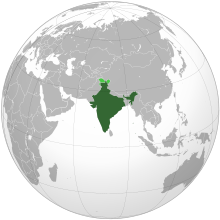



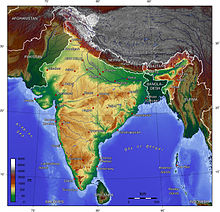

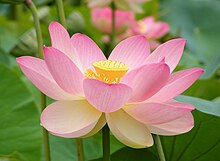

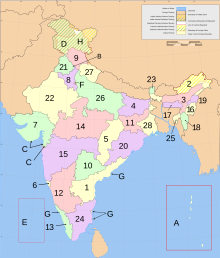
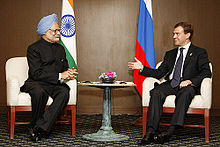





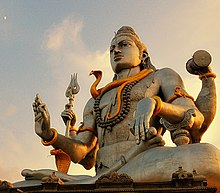
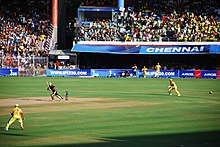
No comments:
Post a Comment